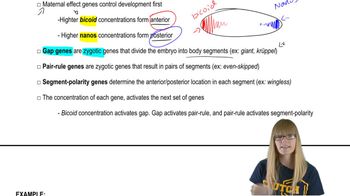Here are the essential concepts you must grasp in order to answer the question correctly.
Exclusion Principle in Paternity Testing
The exclusion principle states that if a man lacks one or more genetic markers that the child must have inherited from the father, he can be excluded as the biological father. This principle relies on comparing specific gene loci between the child, mother, and potential fathers to identify mismatches.
Recommended video:
Genetic Markers and Alleles
Genetic markers are specific DNA sequences used to compare individuals in paternity tests. Each person inherits one allele from each parent at a gene locus. By analyzing these alleles in the mother, child, and potential fathers, one can determine if the child’s alleles could have come from the tested men.
Recommended video:
Inheritance Patterns of Autosomal Genes
Autosomal genes are inherited equally from both parents, with one allele coming from the mother and one from the father. Understanding this pattern is essential to identify which alleles in the child must have originated from the father, enabling exclusion or inclusion of potential fathers based on allele matches.
Recommended video:
 Verified step by step guidance
Verified step by step guidance Verified video answer for a similar problem:
Verified video answer for a similar problem:



 7:40m
7:40m